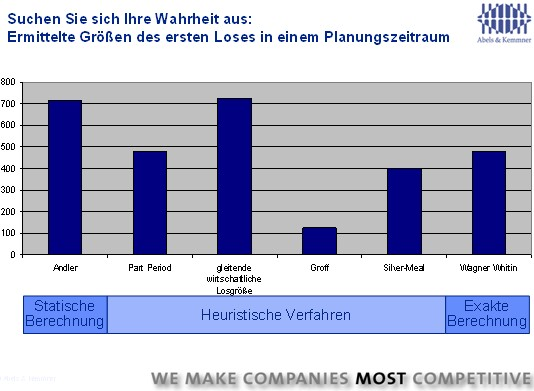The part-period method (piece-period equalization method) is a method for determining economic lot sizes.
Like all of these processes, the part-period process also checks whether it makes economic sense to order further requirements in the future if an item needs to be reordered or reproduced. It combines as many future requirements into one order or production order as the fixed lot-size costs (order or setup costs) are just less than the inventory costs.

The part-period method is included in many ERP systems as a method for determining economic lot sizes. However, its calculation algorithm does not lead to the batch size with the lowest unit costs. Furthermore, it does not take into account the fact that grouping order requirements within a planning period automatically reduces the scope for optimization for grouping the remaining order requirements in the future.
Our tip: It is better to use the Wagner-Whitin method than the part-period method.
Further information on this topic can be found here:

